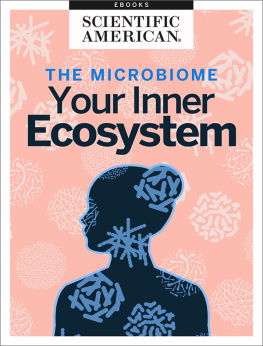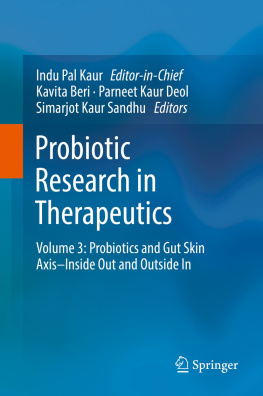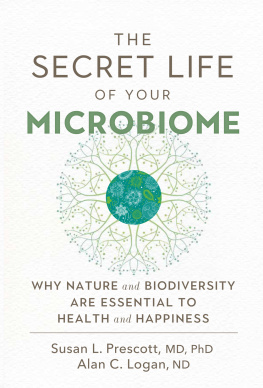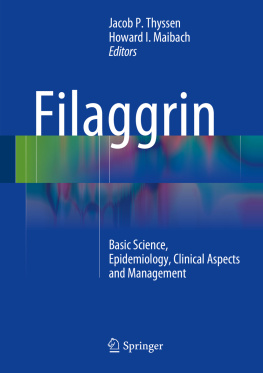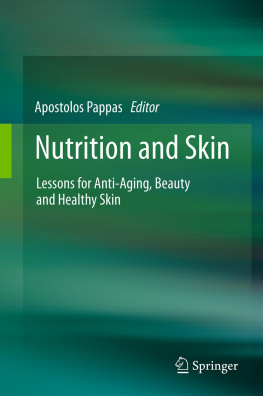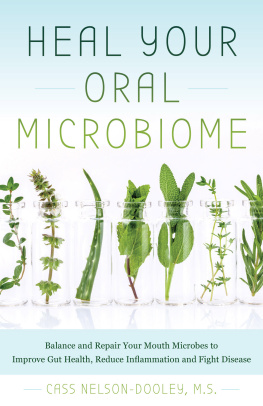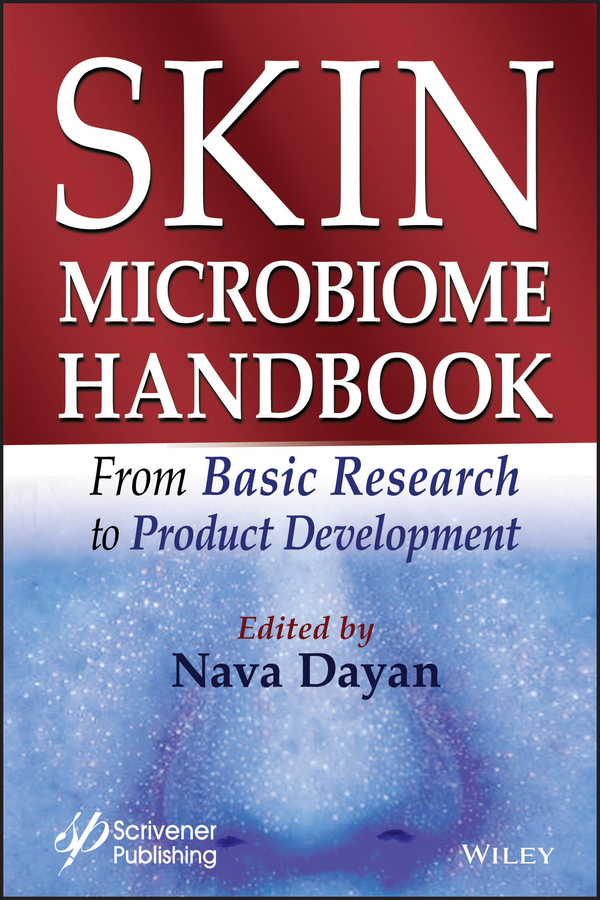
Table of Contents
List of Tables
- Chapter 1
- Chapter 3
- Chapter 4
- Chapter 5
- Chapter 6
- Chapter 7
- Chapter 9
- Chapter 10
- Chapter 11
- Chapter 12
- Chapter 14
- Chapter 15
- Chapter 17
- Chapter 18
List of Illustrations
- Chapter 1
- Chapter 2
- Chapter 3
- Chapter 4
- Chapter 5
- Chapter 6
- Chapter 8
- Chapter 9
- Chapter 10
- Chapter 11
- Chapter 13
- Chapter 14
- Chapter 15
- Chapter 17
- Chapter 19
Guide
Pages
Scrivener Publishing
100 Cummings Center, Suite 541J
Beverly, MA 01915-6106
Publishers at Scrivener
Martin Scrivener ()
Phillip Carmical ()
Skin Microbiome Handbook
From Basic Research to Product Development
Edited by
Nava Dayan
Dr. Nava Dayan L.L.C.

This edition first published 2020 by John Wiley & Sons, Inc., 111 River Street, Hoboken, NJ 07030, USA and Scrivener Publishing LLC, 100 Cummings Center, Suite 541J, Beverly, MA 01915, USA
2020 Scrivener Publishing LLC
For more information about Scrivener publications please visit www.scrivenerpublishing.com.
All rights reserved. No part of this publication may be reproduced, stored in a retrieval system, or transmitted, in any form or by any means, electronic, mechanical, photocopying, recording, or otherwise, except as permitted by law. Advice on how to obtain permission to reuse material from this title is available at http://www.wiley.com/go/permissions.
Wiley Global Headquarters
111 River Street, Hoboken, NJ 07030, USA
For details of our global editorial offices, customer services, and more information about Wiley products visit us at www.wiley.com.
Limit of Liability/Disclaimer of Warranty
While the publisher and authors have used their best efforts in preparing this work, they make no representations or warranties with respect to the accuracy or completeness of the contents of this work and specifically disclaim all warranties, including without limitation any implied warranties of merchantability or fitness for a particular purpose. No warranty may be created or extended by sales representatives, written sales materials, or promotional statements for this work. The fact that an organization, website, or product is referred to in this work as a citation and/or potential source of further information does not mean that the publisher and authors endorse the information or services the organization, website, or product may provide or recommendations it may make. This work is sold with the understanding that the publisher is not engaged in rendering professional services. The advice and strategies contained herein may not be suitable for your situation. You should consult with a specialist where appropriate. Neither the publisher nor authors shall be liable for any loss of profit or any other commercial damages, including but not limited to special, incidental, consequential, or other damages. Further, readers should be aware that websites listed in this work may have changed or disappeared between when this work was written and when it is read.
Library of Congress Cataloging-in-Publication Data
ISBN 978-1-119-59223-5
Cover image: Pixabay.Com
Cover design by Russell Richardson
This book is dedicated to my one and only ever and forever,
my husband and partner, and to my two amazing children.
My husband was the one who seeded in me the idea to edit this book.
He and my children teach me, every day, the practice of unconditional love
and support and, as such, they are my mentors to connect to God.
Preface
I belong to those scientists who believe in the existence of God and as such I know we are here to connect to Him, love and cherish Him and His creation. Exploring nature through research is merely a way of understanding the Creator. While humans can invent extraordinary creations, these are only a revelation and exploration of His work. It also means that we are extremely limited. Humility is at the core of our work.
Our senses dictate to a great degree the reality we live in. Yet, as educated human beings in the scientific era, we acknowledge the fact that the existence of another entity or power in our life, even if not sensed or seen, can be real. The microbiome is a dimension of our reality that is alive and vibrant but cannot be seen by the naked eye. An entire microcosmic universe of activity affects every aspect of our being, from the planet to our bodies to our spirit and back. With the invention of high-resolution techniques, such as microscopy, we began to learn about these entities. With the immense advancement in genomic research, we are now making progress in exploring their nature and identity.
Our ability to sequence the genome in a faster and more economically savvy fashion has been greatly promoted by the human genome project, which gave rise to this new level of exploration of entities with genomic material that is different from humans, such as the microbiome. In the end, we are all connected.
Of more importance is the profound acknowledgment of the power and influence that the microbiome holds over our health and well-being. These microorganisms can make the difference between life and death, health and disease, depression and mania... The list goes on! This book is written at a time when the research is still shaping our knowledge, and as such, it can be perceived as a milestone at a stage where we know the basic nature of the players but are still at the edge of exploring the interplay in the scene. Bacteria, viruses and fungi communicate. They communicate with one another and they communicate with us at the cellular and sub-cellular levels when on us or inside us. This cross talk is what I believe the next era of research will focus on. In a sense, the identity of the communicator (bacteria or human cell) is mute when compared to what it conveys and why. In research we call it functionality. Take for example a bacterium that contains genetic material of about 2500 protein encoding genes. In theory, it has the potential to generate 2500 proteins that will function as receptors, toxins, enzymes and other biomarkers. These can be recognized by human cells that will respond in accordance to the message carried with the biochemistry produced. The environment is the compass for the bacteria to act in one way or another. This is the epigenetics of the human body as an ecosystem that contains both human cells and microorganisms.
If there is an imminent safety threat, it will create a protection weapon in the form of toxins. If it is well nourished and safe, it may facilitate a beneficial immune response that will strengthen our bodies.
From a practical evolutionary point of view, the microbiome that resides in a healthy human body would have an agenda of survival and proliferation, and as such, would strive to protect the body and maintain its health so that symbiosis persists.
The idea of good and bad, protection and nourishment, health and disease, survival and death are all Gods creation embedded in us at a molecular, cellular, and sub-cellular level. In a sense, every part of us, however big or small, is on a journey to explore the higher levels of conciseness. After a decade of studying the skin microbiome, I am convinced that we limit our understanding because we attribute to it aspects of human nature. Humans are the only entity in this world that have been created with an ego. As generations advance, the ego has now grown to monstrous dimensions. Bacteria, on the other hand, does not hold these same aspirations. Rather, it is busy with the very basics of survival. Adopting this understanding may allow us breakthrough revelations.
Next page

